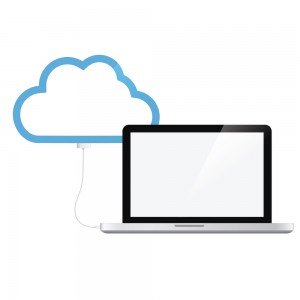 The end of each year brings a wealth of predictions for technology and marketing — and the end of 2013 was no different. Want to catch up on some of the key predictions for 2014? We’ve summed up a few here, but be sure to click on the sourced links to see the full list of that expert’s predictions for the year.
The end of each year brings a wealth of predictions for technology and marketing — and the end of 2013 was no different. Want to catch up on some of the key predictions for 2014? We’ve summed up a few here, but be sure to click on the sourced links to see the full list of that expert’s predictions for the year.
More businesses will become software companies.
“A couple of years ago, Mark Andreessen proclaimed that ‘software is eating the world.’ Next year, this will become profoundly obvious. Simply put, every product or service is getting wrapped in IT, and all these applications will find their home in the cloud.”
Analysts will matter more than data scientists.
“There are more than 2.5 Million data analysts in line-of-business functions serving the analytic needs of firms. As much as we wish data science will solve all the world’s analytic problems; there simply aren’t enough data scientists to go around. At the same time, software providers need to answer the call for providing better tools to support the current generation of analytic minds that are destined to change the world.”
Big Data brings its A-game in marketing.
“Analytics will have another big year in the Marketing Department influencing advertising, promotions, and consumer behavior.”
Never fear — the cloud is here.
“Enterprise decision makers will no longer debate whether cloud services are reliable or secure enough to handle their corporate needs and will aggressively pursue strategic cloud initiatives that will transform the way they operate to better compete in an increasingly challenging business environment.”
SaaS becomes de facto for buying new applications.
“SaaS has overtaken on-premise in categories such as HCM, CRM, and collaboration. Solutions once available in multiple deployment modes are now SaaS only (i.e. Oracle RightNow and SAP Ariba seldom offer on-premise any longer). The hold-outs: large enterprise suites are still not available in a true SaaS mode but are increasingly shifting to at least an ASP model.”
Cloud-to-cloud continuity will get serious with SaaS.
“Disaster recover (DR) is a leading driver for public cloud use, but mostly by enterprises looking to improve the resiliency of mid- to low-end apps and for smaller companies putting their entire recovery strategy in the cloud. But in 2014, cloud-based DR will go cloud-to-cloud. The first phase will unfurl in the next year with cloud-to-cloud backups for mainstream SaaS offerings. In the SaaS market, enterprises struggle to restore data with steep recovery fees (or in some cases, total lack of service) by their SaaS vendors. A new market of backup solutions is rising to meet this need with early solutions from Backupify and Spanning. These offerings automate the protection of critical data that is stored with SaaS providers so organizations can recover this data if it is accidentally, or maliciously, deleted.
The Internet of Everything
“The Internet is expanding beyond PCs and mobile devices into enterprise assets such as field equipment, and consumer items such as cars and televisions. The problem is that most enterprises and technology vendors have yet to explore the possibilities of an expanded internet and are not operationally or organizationally ready. Imagine digitizing the most important products, services and assets. The combination of data streams and services created by digitizing everything creates four basic usage models — Manage; Monetize; Operate; Extend. These four basic models can be applied to any of the four “internets” (people, things, information, and places). Enterprises should not limit themselves to thinking that only the Internet of Things (i.e. assets and machines) has the potential to leverage these four models. Enterprises from all industries (heavy, mixed, and weightless) can leverage these four models.
Cloud computing is set to become mainstream computing.
“We’ll continue to call it ‘cloud’ for some time to come, and vendors will continue to pitch it as ‘cloud,’ but it’s now the mainstream. We’ve seen this before. In the early 1990s, there was client/server computing, in which PCs were provided access to larger back-end systems. Then, it was Internet computing, in which applications and data were exposed through websites. We still have mobile computing, but the act of using smartphones to access back-end applications and data is simply being thought of as computing as well.”
Follow The Starr Conspiracy on Twitter to keep up with news, trends, and predictions for enterprise software and cloud computing.


